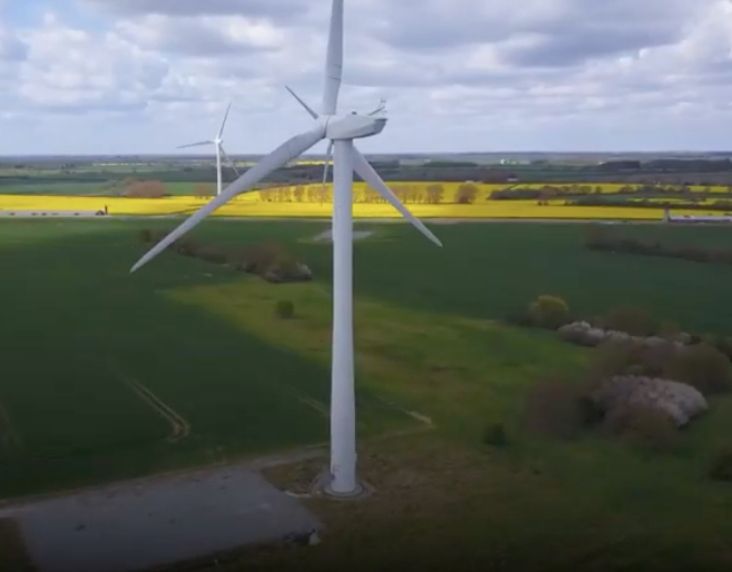The mining and metal processing industry plays a pivotal role in shaping economies and fuelling technological advancements. However, with complex operations, vast quantities of data, and increasing challenges, traditional approaches to decision-making are no longer sufficient. In this era of digital transformation, advanced analytics has emerged as a game-changer for mining and metal processing companies. By harnessing the power of data, these industries can unlock valuable insights, optimize operations, and drive sustainable growth. In this blog post, we will delve into the world of advanced analytics in mining and metal processing, exploring its applications, benefits, and the path forward.
Advanced analytics is transforming the mining Industry by leveraging big data which can enable the mining industry to make data driven decisions to enhance operational efficiency, minimize environmental impact, and maximize return on investments. Let’s understand some of the examples about how mining industry is exploring data analytics.
Optimizing Extraction and Resource Management
Mining operations involve numerous variables, such as ore quality, geological conditions, and equipment efficiency. Advanced analytics techniques, such as machine learning and predictive modelling, can help optimize extraction processes and resource management. By analysing historical data, operators can predict ore grades, identify potential bottlenecks, and adjust operational parameters to maximize efficiency. Real-time data monitoring enables proactive decision-making, reducing downtime and increasing productivity.
Enhancing Safety and Risk Management
Mining and metal processing are inherently risky activities. Advanced analytics can improve safety by analysing vast amounts of data from various sources, including sensors, wearables, and historical incident records. By detecting patterns and anomalies, predictive analytics algorithms can identify potential safety hazards and proactively mitigate risks. This allows companies to implement preventive measures, enhance safety protocols, and protect workers' well-being.
Improving Energy Efficiency and Environmental Sustainability
Energy consumption and environmental impact are key concerns for the mining and metal processing industry. Advanced analytics can optimize energy usage by monitoring energy-intensive processes, identifying inefficiencies, and recommending energy-saving measures. Furthermore, data-driven insights can help companies develop sustainable practices, reduce carbon emissions, and minimize the environmental footprint. By leveraging analytics, organizations can strike a balance between profitability and responsible resource utilization.
Streamlining Supply Chain Management
Efficient supply chain management is critical for mining and metal processing companies to maintain smooth operations. Advanced analytics provides end-to-end visibility across the supply chain, enabling proactive demand forecasting, inventory optimization, and streamlined logistics. By integrating data from all stakeholders one can make data-driven decisions, reduce costs, and enhance customer satisfaction.
Embracing Digital Twins and Simulation
Digital twins and simulation models are revolutionizing the mining and metal processing industry. By creating virtual replicas of physical assets and processes, companies can test different scenarios, optimize workflows, and improve operational performance. Advanced analytics algorithms can analyse data from digital twins, enabling predictive maintenance, real-time optimization, and accurate production forecasting. This empowers organizations to minimize downtime, extend asset lifespan, and maximize overall operational efficiency.
Let’s look at some practical use cases of how advanced analytics is being applied in the mining and metal processing industry:
Predictive Maintenance Mining companies are using advanced analytics techniques to predict equipment failure and optimize maintenance schedules. By analysing sensor data and historical maintenance records, algorithms can identify patterns and indicators of equipment breakdown. This allows companies to schedule maintenance proactively, reducing unplanned downtime and optimizing asset performance.
Geospatial Analysis Advanced analytics helps mining companies make informed decisions regarding exploration and mine planning. By analysing geological and geospatial data, organizations can identify potential mineral deposits and optimize resource extraction. This includes analysing satellite imagery, geological surveys, and seismic data to pinpoint promising areas for exploration.
Supply Chain Optimization Advanced analytics enables mining and metal processing companies to optimize their supply chain operations. By integrating data from suppliers, transportation, and production processes, organizations can optimize inventory levels, reduce transportation costs, and improve overall efficiency. Predictive analytics also helps in demand forecasting, allowing companies to optimize production schedules and minimize stockouts.
Safety Monitoring Mining companies employ advanced analytics techniques to enhance safety monitoring and risk management. By analysing real-time data from sensors, wearables, and environmental monitoring systems, algorithms can identify potential safety hazards and alert personnel in real-time. This enables proactive measures to be taken, preventing accidents, and ensuring worker safety.
Energy Management Advanced analytics plays a crucial role in optimizing energy consumption in mining and metal processing operations. By analysing energy usage patterns and equipment performance data, companies can identify energy-intensive processes and implement energy-saving measures. This includes optimizing equipment configurations, identifying energy-efficient alternatives, and implementing real-time energy monitoring systems.
Environmental Impact Assessment Advanced analytics helps mining companies assess and mitigate their environmental impact. By analysing data related to water usage, waste management, and emissions, organizations can identify areas of improvement and implement sustainable practices. This includes optimizing water usage, reducing waste generation, and implementing emissions control measures.
Production Optimization Advanced analytics techniques, such as process optimization and simulation modelling, are used to optimize production processes in mining and metal processing. By analysing real-time data and historical production records, algorithms can identify bottlenecks, optimize parameters, and improve overall production efficiency. This includes optimizing grinding and flotation processes, reducing energy consumption, and improving metal recovery rates.
These are just a few examples of how advanced analytics is being applied in the mining and metal processing industry. The potential for leveraging data-driven insights is vast, and companies continue to explore new ways to enhance operational efficiency, sustainability, and safety through advanced analytics techniques.
Conclusion
The mining and metal processing industry is witnessing a paradigm shift, driven by the power of advanced analytics. By leveraging data-driven insights, organizations can optimize extraction processes, enhance safety, improve energy efficiency, streamline supply chain management, and embrace immersive user experience. However, to fully reap the benefits, companies need to invest in robust data infrastructure, cultivate a culture of analytics, and collaborate with technology partners. Advanced analytics is not just a buzzword but a transformative force that will redefine the mining and metal processing landscape, enabling sustainable growth, and unlocking new possibilities in this ever-evolving industry.
About the Author
Sumit Sontakke,
Head- Construction, Metals and Mining Subvertical, Tech Mahindra
Sumit is a dedicated expert in digital transformation, digital leadership and industry 4.0 with 18+ years' experience in diverse industries. He has established a digital ecosystem in process industries, articulated execution strategies, collaborated with stakeholders on tactical and strategic initiatives and developed roadmaps. As a young business leader, he assists organizations to develop their digital eco-system by leveraging new disruptive technology, nurturing leadership, empowering teams, influencing board members and industry peers.
Currently, his focus is to manage and lead construction, metals & mining vertical as a part of senior TechM leadership team. He manages revenue and generate new revenue stream in digital solutions.





